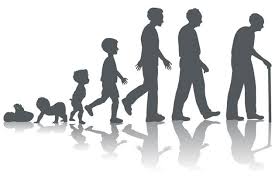 By Zainub Jada
By Zainub Jada
15:06:2022
Ask ten people what productivity is to them, and you’ll get ten different answers.
For some, getting their 9 to 5 job done early and having time to spend with their family is productivity. For others, successfully taking on a side project along with their full-time job is productivity.
WHAT IS PERSONAL PRODUCTIVITY?
Personal productivity is how efficiently you can complete tasks vital to you consistently.
Productivity is a measure of the efficiency of a person in completing a task. We often assume that productivity means getting more things done each day. WRONG. Productivity is getting important things done consistently.
Productivity is more than a buzzword.
- How do you get the most out of your day as a manager, team leader, or employee?
- As a parent, how do you complete your work on time so that you can spend evenings with your children at home?
- As a freelancer, how do you manage multiple projects efficiently to get a high per-hour rate?
WHY IS PERSONAL PRODUCTIVITY IMPORTANT?
Being productive makes us happy as nothing else does. Ticking off your daily checklist, finishing your task before time, and completing multiple projects is very satisfactory.
Whether your goal is getting more money or achieving a perfect work-life balance, the more productive you are, the faster you can achieve your goal, and the more satisfied you’ll feel.
Whether your goal is getting more money or achieving a perfect work-life balance, the more productive you are, the faster you can achieve your goal, and the more satisfied you’ll feel.
HOW DO YOU MEASURE PERSONAL PRODUCTIVITY?
Everyone aims to increase their productivity. Well, the first step is tracking and measuring your productivity.
How productive are you every day, every week, and every month?
Measuring personal productivity requires making tiny, conscious changes to your routine. It involves eliminating distractions as much as possible and ensuring your every hour counts.
There’s a simple 2-step process for measuring your productivity
Step 1: Time Tracking
The most important step is tracking your time and activities.
You can do it the old-fashioned way with a notebook and a pen, or you can embrace technology and use one of the many online time tracking tools. Track every single activity that you do and every single hour.
So, for example, if you’re tracking your workplace productivity, note how you spend every single hour at work. How long was your lunch break, how many bathroom breaks, and how many hours did you spend catching up on emails and scrolling mindlessly on social media?
And how many hours do you end up working?
Track every single activity.
See the best time management tools & apps to help you out!
Step 2: Measuring Your Output
As Peter Drucker rightly said, “What gets measured gets managed.”
The next step is measuring your productivity levels.
The easiest way to do that is by creating a to-do list for all the important tasks you set out to achieve and checking off tasks you’ve managed to complete. So if you had five tasks on your to-do list and completed three tasks, your productivity levels are ‘fairly productive’.
Another way of measuring your productivity percentage is by dividing total time with time spent productively and multiplying it by 100.
So if you’re measuring your workplace productivity, you work from 9 to 5, and you were productive for a total of 5 hours during the entire day, your productivity percentage is
⅝ x 100 = 62.5%
This isn’t too bad!
According to a study by the Voucher Cloud, in an 8-hour work day, the average knowledge worker is only productive for 2 hours and 23 minutes.
However, keep in mind that personal productivity is not just for work; it’s for every goal you try to accomplish.
If you’d like to deep clean your house on the weekend, the same method should be applied to measure how productive you were.
HOW CAN PERSONAL PRODUCTIVITY BE IMPROVED?
The next step is optimising your productivity levels. Three business owners explain what steps they take to amp up their productivity.
Practice time blocking
“I find that mornings are better suited for more thought-requiring tasks because the mind is well-rested and focused. Leave meetings, phone calls, and emails for the afternoon portion of the workday. Time blocking also helps with staying on top of multiple projects at once. Instead of giving all of your time to one project, time block specific days or times to push each project along,” shares Eric Wu, the co-founder and CEO of Gainful.
Utilise the domino method for task management
“Every morning I organise the difficulty of the tasks I need to accomplish that day ranging from most to least difficult. Think about the tasks you put off until the next day and are more likely to procrastinate. I tend to put those tasks at the top of my list and get them done first thing in the morning. Once I get a burdensome task checked off my to-do list, I am more motivated to go after the rest of the list. This method creates a domino effect, causing me to get more done quickly by limiting procrastination, and task anxiety, and ultimately significantly improving my productivity,” explains Tyler Forte, Founder & CEO of Felix Homes.
Get up early to plan your day
Kim, a lawyer and the founder of DocPro, a legal tech platform, shares, “I get up at 5 every day to make a list of things that I need to do for the day, prioritising by importance and urgency. It is also the time when you are most productive and efficient with no distraction. You can get more things done between 5-7 am than 4 hours of work in the afternoon. By planning your day first, you can set clear goals on what to achieve during the day. You should also use the time to handle the important matters and make important decisions.”
Batch your tasks
Grouping similar tasks together or task batching can help you be more consistent and plan your day more efficiently. You eliminate multitasking and context switching. You can conserve energy, maintain focus and establish better productivity habits. Tasks are typically also batched according to the amount of attention they demand.
Stop multitasking
Stop trying to do ten things at once! Changing tasks more than ten times a day drops your IQ an average of 10 points. Get things done more effectively and efficiently by focusing on one task at a time. Less is more when it comes to being productive during the workday. Stick to the basics for reaching productivity.
Take more breaks
The ache in your brain after several long hours of work should signal you to take a break. Since your brain has used up its glucose, give yourself a moment to refresh by going for a walk, grabbing lunch or a snack, or just meditating. You’ll come back recharged and ready to achieve greater efficiency.
Follow the 80/20 rule
Only 20 per cent of what you do each day produces 80 per cent of your results. Eliminate the things that don’t matter during your workday — they have a minimal effect on your overall productivity. For example, break your next project down into steps and systematically remove tasks until you end up with the 20 per cent that gets 80 per cent of the results.
HOW DO DISTRACTIONS AFFECT PRODUCTIVITY?
Sixty seconds of mindless scrolling on Instagram cost you 25 minutes of work.
Crazy right?
According to Gloria Mark, who studies digital distraction at the University of California, Irvine, “Attention distraction can lead to higher stress, a bad mood and lower productivity.”
A study by VoucherCloud showed that the average office worker is only productive for 2 hours and 53 minutes out of the working day. And reading news websites and checking social media were the top 2 distractions that derailed their productivity.
This shows that most of us are terrible at focusing on daily tasks for long periods, hurting our productivity.
WHICH PRODUCTIVITY SYSTEMS CAN HELP WITH PERSONAL PRODUCTIVITY?
Pomodoro method
Francesco Cirillo invented the Pomodoro technique; the Pomodoro technique involves breaking your tasks into 25-minute chunks followed by a 5-minute break. After around four pomodoros (or productive time chunks), you take a longer 15 to 20 minutes break.
Kanban dashboard
In this method, you only need a whiteboard (physical or virtual, both work great), some sticky notes, and a pen.
Make three columns and label them ‘Do’, ‘Doing’, and ‘Done’. Then write tasks on your sticky notes and add that sticky note to ‘Done’ once you’re done with a task.
MoSCoW prioritisation
MoSCoW stands for,
Must have: all the tasks that you need to get done ASAP
Should have: tasks that are important but can wait a couple of days
Could have: tasks that you’d like to do, but you don’t need to tackle them right away
Won’t have: tasks that you’re trying to avoid
In this personal productivity system, please list all your tasks and put them accordingly in these four boxes. This ensures that you’re on top of all your essential tasks and nothing falls through the cracks.
HOW DO I SET GOALS FOR BETTER PRODUCTIVITY?
While having goals is excellent, setting SMART goals is even better. It can help you massively amp up your productivity.
So how do you set them?
SMART goals are:
1-Specific: Are they well-defined and clear?
2-Measurable: How will your goal be measured?
3-Attainable: Are your goals achievable?
4-Realistic: Are they realistic and relevant?
5-Time bound: Do they have a clearly defined timeline?
The Next Steps to Improve Your Personal Productivity
Write down all your goals and break them into small and manageable steps.
Incorporate productivity systems to achieve your goals and hold yourself accountable. Use the Friday daily planner to start.
Eliminate distractions as much as possible.
Create a tech stack of productivity tools and online meeting tools for yourself or your team. Use these to automate tasks and jobs and to roadmap your day.
Don’t forget to pat yourself on the back when you achieve your goals and reward yourself! You deserve it.
BIBLIOGRAPHY
Friday. app
forbes.com







0 Comments